The Chartreux is a rare cat breed from France. It is a domestic cat breed that was first discussed in a poem in 1558. This cat breed was a ratter in shops, homes, and on farms. This cat breed has a thick blue coat. There were plenty of free-roaming cats like the Chartreux that roamed the streets of Paris, and lived throughout France until the 1900’s. After WW1, cat fanciers took interest in this cat breed, and a breed standard for the Chartreux was formed. By 1928 and 1931, this cat breed was showing in Europe.
Brief History
During the eighteenth century, a French naturalist, by the name of Buffon, discussed this cat breed. The Chartreux diminished as a breed after WW2. Nonetheless, European cat breeders maintained this breed. In 1971, the first Chartreux arrived in the U.S. Helen and John Gamon from California, imported the first Chartreux into the U.S. The Cat Fanciers Association (CFA) promoted this breed to showing. By 2007, there were less than two dozen Chartreux cat breeders in North America.
Physical Description



With a strong and powerful body, the Chartreux has a short and thick waterproof coat that is blue. (grey) The eyes are orange, the head is round, and the cheeks full. This cat breed looks like he is smiling. The ears are medium-sized, the chest broad, and the legs are relatively short and fine-boned. The paws are medium-sized. The tail is heavy at the base, but flexible. Movement is athletic and agile.
Temperament
Temperament is quiet, with some Chartreux cats being mute. They can open door latches on screen doors, and are very intelligent cats. They are very observant and athletic. Adulthood is at around age two years of age. This cat breed enjoys traveling. The Chartreux does well with family, strangers, other pets, and children. Chartreux kittens are active and playful. Senior cats tend to enjoy watching, and are much less active. This cat breed is perfect for either apartment or farm living. They are quiet cats that enjoy interactive play. The Chartreux enjoys playing with anything that is lying around, and is playful when there is someone to play with. This wonderful cat breed is super soft to cuddle with, and is easy to live with. The Chartreux needs plenty of love, fun cat toys, and mental stimulation. This cat breed is very vocal.
Special Needs
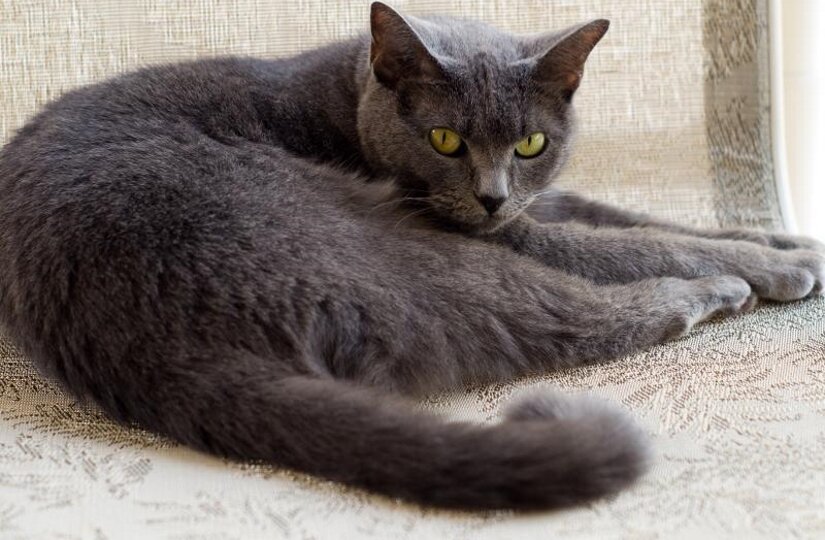
Chartreux kittens should be vaccinated according to a vaccination schedule. This will begin at two months of age. Intestinal parasites are also common in kittens, since mother cats may pass down larvae through the placenta or milk. Your veterinarian will treat your kitten with a broad -spectrum wormer. You will also need to consult with your veterinarian as to the safest antiparasitic products for your cat.
You may also be faced with several health problems after adoption. These could be linked to behavioral problems. Consult with your veterinarian for a behavioral history of your senior cat if working through issues. Understanding why your cat is having problems is important, so that your veterinarian can treat them.
Your Chartreux cat will need to socialize. If getting a kitten, socialization should commence during kittenhood. Your kitten should be handled before reaching ten weeks of age. Cats that have not had the proper amount of socialization may avoid human contact.
When introducing your new cat to other pets in the home, it should be done gradually and over the course of a few days. They should be able to smell each other through safety gates, and then held while getting introduced. Allow pets together for short periods of time if they are calm, and gradually increase the amount of time that the pets spend together. Within multi-pet households, patience and calmness is important.
Your Chartreux cat will also need to be spayed or neutered. Your cat needs to be protected from household dangers like cleaning supplies, toxic plants, electrical cords, and aggressive animals. Cats are carnivores, and will need a high-quality diet with plenty of fresh water every day. Exercise can be achieved through a variety of play toys that encourage running and a game of chase. Sedentary cats may be prone to obesity, and health problems later on in life.
Understanding the responsibilities of cat parenting before getting a cat is important. Keeping your cat indoors as an indoor cat will also keep them safer, and far away from snakes, coyotes, aggressive dogs, and traffic. All cats need plenty of 24-hour TLC!
Possible Health Concerns
The Chartreux is a healthy and moderately active cat breed that may be susceptible to the following health conditions:
- Hip Dysplasia: This is rare in domestic cats, and is common in purebred cats. This occurs when the hip joint is loose, and leads to degenerative joint disease. (osteoarthritis) Symptoms include lameness that can be mild to severe. Cats generally need no surgery for hip dysplasia. Weight reduction can help reduce discomfort.
- Ringworm: This is an infection of the skin, hair, or claws, and is caused by a fungus called dermatophyte. This occurs in 98% of cats. It spreads easily from cats to people. Symptoms include circular, bald patches that scale and have broken hairs in a ring-like fashion. Consult with your veterinarian for advice.
- Hypertrophic Cardiomyopathy: This is a heart muscle disorder where the heart walls of the left ventricle thicken. This results in the walls becoming stiffer. This is a common primary heart disease in cats. It tends to get noticed at around 3 months to 17 years of age. Most cats will be middle aged when this disorder occurs. This disorder tends to affect males more than females, and it is an inherited genetic defect. Symptoms may include difficulty breathing, weakness or paralysis of the hind limbs. Fluid may also accumulate in the lungs, and in the space between the lungs and chest wall. Veterinary treatment will aim at improving cardiac function, and reducing blood clots. There is a good long-term outlook for mildly affected cats. Consult with your veterinarian for advice.
- Gingivitis: This is when the gums become inflamed due to bacterial plaque. At this stage the ligaments and bone are not infected. Gum color in cats will change from a light pink to red or purple. The gum edge wills well. Symptoms include bleeding and bad breath. This can be reversed with proper teeth cleaning. That said, it can worsen and result in periodontitis. Consult with your veterinarian for an effective treatment plan.
Exercise
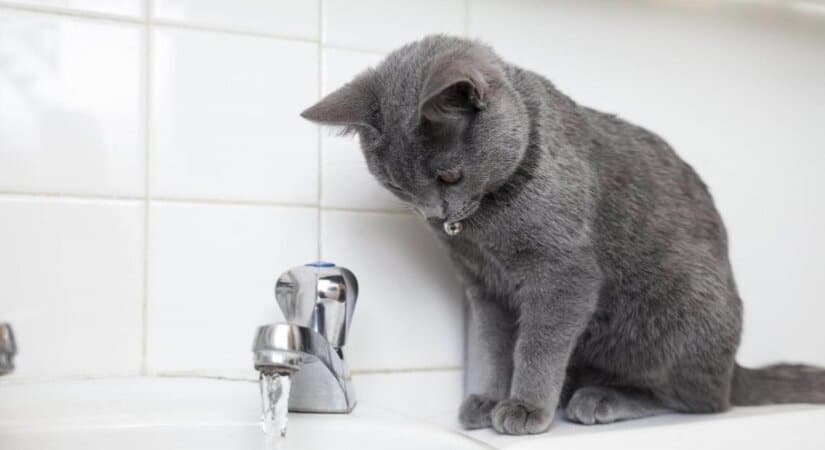
Playtime for indoor cats is extremely important. Because cats are natural predators, and are kept in a domestic environment, daily playtime schedules should mimic “hunt, eat, and chill.” This would be the same schedule that they would have out in the wild. By providing a healthy and stimulating playtime schedule, many feline behavioral problems are eliminated or reduced in frequency. Cat parents need to mimic a cat’s “natural environment combined with activity” within their household, to ensure that their cats are well-balanced and happy.
When choosing cat toys for your Chartreux, opt for toys that allow the entire family to play together. Toys like the Shimmer Glimmer are shimmery and plush, and allow for all cats to have plenty of fun with everyone. The wands allow for change-out-toys to prevent your cat from getting bored.
This cat breed needs daily exercise combined with plenty of mental stimulation through active play and interaction with people. Cat parents can use cat toys like the Mousr or Cat Dancer to get their cats to play. This will encourage your cat to play. Finding a variety of mentally stimulating cat toys will allow for your cat to lead a well-balanced life, with the right amount of exercise and mental stimulation. Cat harnesses also allow for daily walks.
This cat breed is an active cat breed, that thrives on attention and free-play. That said, this cat breed still needs to play and interact with people, but needs to have plenty of environmental stimulation 24/7. Cat gyms, cat scratchers, and interactive cat toys within a cat friendly home environment work best for this fabulous cat breed.
Look out for the latest cat toys like Ripple rug play mats, the Feather Whirls, pet cube toys, food trees, turbo scratcher toys, cat companion interactive toys, and electronic motion toys. All these and many more will keep your cat entertained when you’re out and about. Chasing, hunting, and attacking toys are some of the methods that cats will use when playing with interactive toys. When out shopping for cat toys, opt for safe TPA materials that have no toxic BPA or BHT. Ultimately, what feline pet parents need to achieve is bonding through free play and exercise.
Cat trackers like the Pod are waterproof and allow for cat parents to track their cat’s daily activities. Cat parents can track their cats by mobile phone and computer applications.
Nutrition
Always take notice of your cat’s eating behavior. If your Chartreux suddenly has a lack of appetite, it could indicate a serious illness. That said, if after a day, he’s still not eating, visit your veterinarian.
Fresh, clean water needs to always be on hand for your cat. Canned cat food contains moisture, yet water should never be withheld from your cat. By feeding the proper amounts of cat food, you’ll also prevent your cat from becoming obese. Healthy cats are less prone to heart disease, arthritis, and a shorter lifespan.
The Chartreux cat breed will need proper nutrition. That said, a high-quality diet that is appropriate for the specific life stage of the cat is necessary. Protein as an ingredient, needs to come first. Dry cat food is a popular choice because it promotes healthier gums and teeth. Yet, wet food is highly recommended by veterinarians because it provides more moisture to cats. Cats don’t drink a lot of water and tend to sometimes get dehydrated. Wet cat food also has its benefits. By choosing a well-known name- brand cat food that has scientific backing, as well as quality control, cat parents can be assured that they are providing a well-balanced diet.
All cat breeds need high- quality fat and protein in their diets. They also need amino acids, including taurine that cannot be found in either human food or dog food. There are also numerous specialty diets for your cat that are formulated specifically for certain medical problems like urinary tract disorder, obesity, or kidney disease.
All cats do well by being fed twice daily. During kittenhood, kittens will need to be fed every few hours. Growing kittens need more calories, nutrients, vitamins, protein, and calories. Your cat should be able to enjoy a peaceful meal in a quiet corner of the house. Some cat parents prefer to leave cat kibble out 24/7. When looking for a high-quality cat food, here’s what to look out for:
- No low-quality fillers
- No artificial additives
- Low grade ingredients or toxic ingredients
- All cat food has to be meat-based because all cats are carnivores.
- No garlic
- Plant-based ingredients should be listed after the protein-based ingredients
Consult with your veterinarian for the best dietary advice for your Chartreux cat.
Grooming
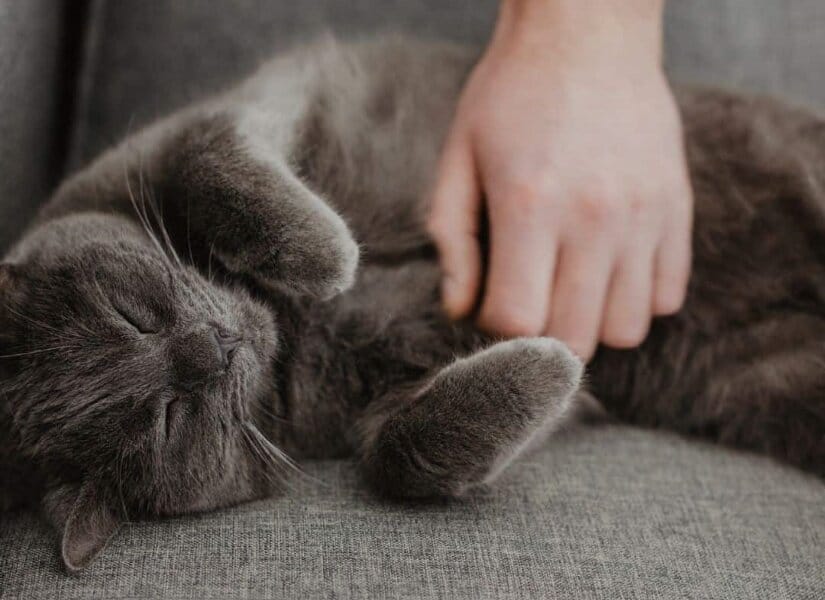
Cat pampering is a norm today with feline pet parents wanting the very best for the cats. Your Chartreux may be susceptible to skin diseases originating from flea bites, mites, yeast infections, and infections. Opt for natural cat grooming products to help resolve these skin irritants.
All cat breeds have highly sensitive skin. By using grooming wipes and waterless shampoos in between bathing schedules, you’ll have a healthier cat.
The Chartreux needs daily grooming to remove shedding or dead hair. Because this breed has a short and fine, soft coat, grooming is easy. Stainless steel combs help to remove dead hair. Care must be taken when grooming leg hair and body hair to avoid sensitive areas. Some cats have very sensitive areas along their backs, legs, and belly area. Curry brushes help with grooming, and will remove dead hair and debris from your cat’s coat.
Look for high-quality pet products to decrease shedding, and help prevent hairballs. Products like the Furminator will easily groom through your cat’s coat, and safely remove dead hair without hurting your cat. Soft tip massagers, deluxe nail trimmers, and de-shedding tools all help make cat grooming so much easier.
All cat breeds will groom themselves several times throughout the day. Daily grooming is necessary because it limits the amount of hair that your cat will consume. This helps limit the development of hairballs. Your cat will enjoy being groomed. Coat hair always looks best during the cold winter months. Cats that have been spayed or neutered will have great coats year- round. This is because hormonal changes in cats affects coat length and thickness.
Daily cleaning with pet wipes beneath the tail is necessary. Ears should be checked weekly for cleanliness and sensitivity. If there is a build-up of wax and dirt, organisms can lead to an ear infection. Consult with your veterinarian about safe and gentle ear cleaning techniques. Nail trimming is necessary every few weeks. Eyes should also be cleaned gently every morning with cotton wool or a soft wipe. Each eye should be cleaned with different wipes or cotton balls to avoid eye infection contamination in both eyes.
Healthy cats need minimal bathing with a gentle cat shampoo. Your cat will need dental care as well. By feeding dry food, and having professional dental cleanings with your veterinarian throughout your cat’s lifetime, your cat will have less of a chance of developing gingivitis or gum disease. Cats should also have their teeth brushed a few times a week with a special feline toothpaste and brush.
Small and frequent effective hygiene habits will make a big difference in maintaining healthy skin, healthy teeth, and good overall health. Look for environmentally safe pet products that have natural ingredients. Consult with your veterinarian for advice.
Adopting a Chartreux
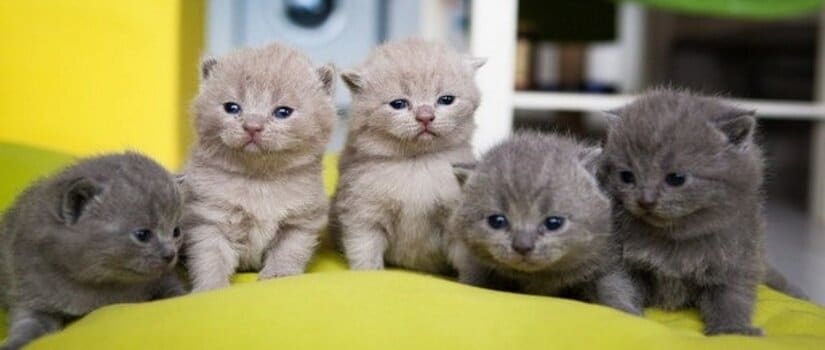
Fill your home with crinkle balls, sisal rollers, and plush feline toys before bringing your new cat home. There are also numerous battery-operated toys that function on their own and spin. These are designed to stimulate a cat’s prey movements, and will encourage your new cat to practice his stalking skills. Free-standing cat scratches, and cat condos help to encourage scratching in the right places. Cat condos are perfect for the newly adopted kitty and offer a place to hide, perch, and scratch!
Cat parents often wonder if they should adopt or purchase. With so many cats up for adoption, it’s the only way to go! When choosing your Chartreux, ask questions, and look for a great temperament! That said, numerous cats can be quirky at shelters, but soon settle down in their new homes, and become very friendly and sociable. In addition, kittens should be playful and curious.
Give your cat a few months to settle in to his new home. Some cats may take longer than a year to settle down, most especially older cats that have spent a long time at the shelter. Many cats tend to be depressed when coming from a shelter. By providing your cat with regular feed times, consistent playtime, and a cat-friendly environment, you’ll help your feline overcome his depression. It takes time, but feline depression can be treated with the help of your veterinarian.
Sickly kittens that have bad odors or plenty of diarrhea stains, and a dull coat need to be seen by a veterinarian as soon as possible. Kittens when ill, can go downhill very quickly. However, the rewards of adopting a sick animal and caring for it are tremendous, provided that good veterinary care is provided right away. Keep in mind that vaccinations and parasite control are an important part of feline health care.
Your cat will also need to be protected from household hazards, most especially electrical cables, poisonous plants, medication, and open windows. The Chartreux makes for a wonderful adoption! As usual, make sure that children are always gentle and quiet around your cat.
Give your cat time to adjust to his new surroundings. As with any cat adoption, make sure that you have the time and resources to take good care of your Chartreux.
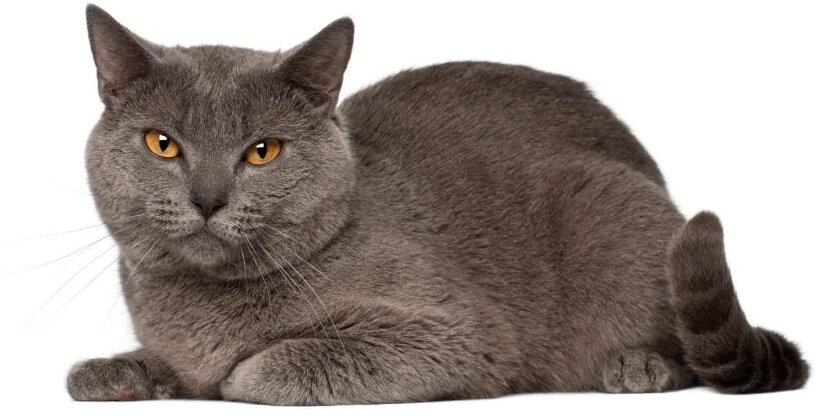
I have had 3 Chartreux in the last 4 years. My first adoption was a process to be how him a home situation and a loving place to end his counted days, literally. The second adoption turned out to be of a wire-hair coat, which was extremely causative of a violent reaction, so I had to bring her back…at my despair.
Then in 2017 I found my little champ, we had a very cute first encounter, and after bringing in the fam to see him, he came home with me on 12-17-19.
On June 22, my kiddo went to the vet for a urine analysi@, then the vet wanted a blood test and finally, I came home alone. I am not so worried about the kittens ‘potential @ being adopted, (could say more on this but won’t ) but seniors are the last, less desirable, and the worst part of this, they are such treasure, grateful, attentive, adaptable, non judgemental, quick learners…and so much more. I give myself 6 months and there will be another Chartreux at my address. I have never been too attached to endorse one breed over another. In fact, my last baby’s being a Chartreux was a later discovery post adoption. BUT , I discovered that this breed is my fit-like-a-glove personality match. We rhyme, see eye to eye, and make great friends. So I will not ever buy a Chartreux. My place in this pet overpop of cats , is to adopt as long as I can. That caretaking mission is now my new purpose in life.